Exploring IR Dyes: Uses, Traits, and Future Trends
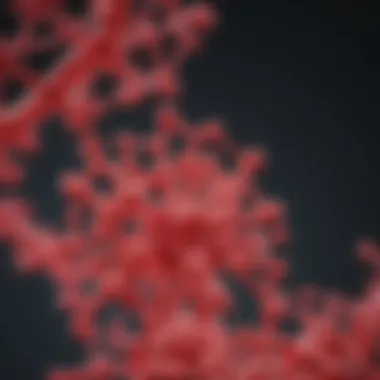

Intro
Infrared dyes, or IR dyes, are compounds that have the ability to absorb and emit infrared light. These characteristics make them valuable in various scientific fields. The exploration of IR dyes is critical as their applications extend from imaging devices to therapeutic practices. Understanding their properties, synthesis methods, and relevance leads to greater advancements in technology and health.
As industries advance, the demand for effective materials that operate in the infrared spectrum increases. The importance of IR dyes lies in their diverse applications, which can enhance systems used in communication, medical diagnostics, environmental monitoring, and more. This article offers a comprehensive guide on IR dyes, detailing their properties, usage, synthesis methods, and future prospects.
Preface to IR Dyes
Infrared dyes play a crucial role in various scientific and technological applications. This section aims to delve into their importance, defining what they are and exploring their historical significance. Understanding infrared dyes is essential because they enable advancements in imaging technologies, environmental monitoring, and biomedical applications.
Definition and Importance
Infrared dyes, or IR dyes, are organic substances capable of absorbing and emitting infrared light. These dyes are significant due to their unique properties, allowing them to interact with the infrared spectrum. They are not only useful for enhancing imaging techniques but also for improving sensing applications.
The key characteristics of IR dyes include high absorption coefficients in the infrared region and substantial chemical stability. Such attributes make them valuable for diverse applications, from thermal imaging to medical diagnostics. They are essential in technologies that require precise detection of heat or infrared signals, such as surveillance and environmental monitoring.
In biomedical fields, these dyes can be used for labeling and imaging biological samples. This enables researchers to visualize processes that are otherwise invisible. Therefore, the understanding and application of IR dyes is vital in modern science and technology.
Historical Context
The exploration of infrared dyes dates back to the early 20th century when researchers recognized the potential of these compounds for various applications. Initially, their use was limited to specific industrial processes. Over time, the scientific community began to understand the complete range of their capabilities.
In the 1960s and 1970s, advancements in chemical synthesis and a deeper understanding of molecular structures led to the development of more sophisticated IR dyes. As technology advanced, particularly in the fields of optics and materials science, the demand for IR dyes surged, leading to significant research efforts.
Today, researchers continue to innovate, seeking to improve existing dyes and create new ones with enhanced properties. Understanding the history of IR dyes helps contextualize their significance in contemporary applications, illustrating how far the field has progressed and its potential future directions.
Chemical Properties of IR Dyes
The chemical properties of IR dyes are crucial in determining their application and overall efficacy. Understanding these properties allows researchers and developers to optimize existing dyes and create new variants tailored for specific purposes. Key elements include molecular structure, absorption characteristics, and chemical stability. Each of these factors contributes to how IR dyes perform in various applications, ranging from biomedical uses to environmental monitoring.
Molecular Structure
The molecular structure of IR dyes significantly influences their behavior in both absorption and emission processes. Typically, these dyes contain conjugated systems, which allow for extended electron delocalization. This delocalization results in lower energy transitions, enabling the absorption of infrared light. The arrangement of functional groups in the molecular framework also determines solubility and interaction with other substances.
In designing new IR dyes, modifications in the molecular structure can enhance specific properties, such as solubility in polar or nonpolar solvents. An example of this involves the addition of ionic or polar substituents, which can increase solubility in aqueous solutions, enhancing usability in various applications.
Absorption Characteristics
Absorption characteristics of IR dyes are essential to their functioning, particularly in applications like imaging technologies. The wavelengths at which a dye can absorb light dictate its utility. Dyes that absorb in the near-infrared spectrum, for instance, are preferred for biomedical imaging as this range penetrates biological tissues with minimal scattering.
The absorption spectra depend on the molecular structure, where the presence of specific functional groups can enhance the dye's ability to absorb certain wavelengths. For example, adding electron-withdrawing groups can lower the energy gap, shifting the absorption towards the infrared region. This fine-tuning of absorption characteristics is vital for maximizing the performance of IR dyes in practical uses.
Chemical Stability
Chemical stability refers to the ability of an IR dye to maintain its structure and performance over time, especially in various environmental conditions. This property is critical for applications that require longevity and reliability, such as sensors and long-term imaging solutions. Factors influencing chemical stability include temperature, pH levels, and exposure to light.
Many IR dyes are susceptible to photodegradation, where exposure to light leads to a breakdown of the dye structure. This instability can severely affect their utility in applications. Researchers focus on synthetic variations that enhance stability, such as incorporating robust chemical linkages or using protective coatings that shield the dyes from degrading factors.
"Understanding the chemical properties of IR dyes not only facilitates better utilization in current applications but also helps pave the way for future innovations in materials science."
In summary, the chemical properties of IR dyes provide insights into their functionality and usability. Through thoughtful modifications and a deep understanding of their molecular characteristics, it is possible to expand their applications across various fields.
Types of IR Dyes
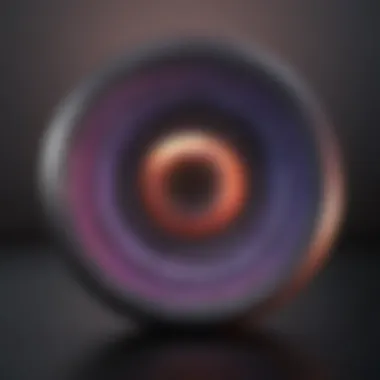
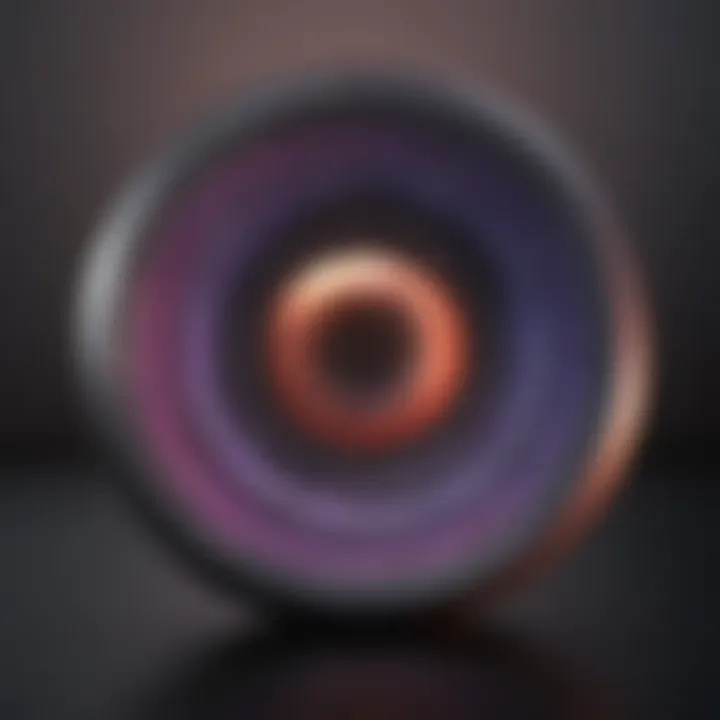
The classification of infrared (IR) dyes is essential for understanding their applications and properties. Different types of IR dyes offer distinct characteristics that cater to various industries. Analyzing these categories allows researchers and professionals to choose the appropriate dye for specific uses. Each type of dye brings unique advantages and considerations, making this area integral to the broader discussion of IR dye technology.
Organic IR Dyes
Organic IR dyes are often celebrated for their versatility. They typically consist of carbon-based molecules, which allows for a wide range of structures and functionalities. These dyes frequently display excellent absorption properties in the near-infrared region, which is critical for applications in imaging and sensing.
Some significant benefits of organic IR dyes include their low toxicity and ease of synthesis. Moreover, they can be modified chemically to enhance desired features such as solubility or stability. For instance, cyanine dyes, a subclass of organic IR dyes, are widely used in biological imaging. Their tunable absorption and emission wavelengths make them suitable for cell imaging and other bioassays.
However, it is important to note that organic IR dyes may suffer from issues related to photobleaching. This is the process where the dye loses its ability to fluoresce after prolonged exposure to light. Researchers are working on formulations that improve the longevity of these dyes under experimental conditions.
Inorganic IR Dyes
Inorganic IR dyes are characterized by the presence of metal ions or compounds in their structure. They can offer superior thermal and chemical stability compared to their organic counterparts. This makes them suitable for harsher operating conditions, particularly in industrial applications.
The stability of inorganic IR dyes is an advantage in environments where organic dyes might degrade. Furthermore, these dyes tend to possess lower volatility, making them safer for certain applications. One important subset is the IR-absorbing nanoparticles, which can provide unique functionalities. Commonly used materials include indium tin oxide and silver nanoparticles.
Yet, the synthesis of inorganic IR dyes can be more complex and costly. Their production often requires sophisticated techniques and equipment. In some instances, regulatory considerations also come into play, as certain metal compounds may have environmental implications.
Nanocomposite Dyes
Nanocomposite dyes are emerging as a novel category within the IR dye landscape. These materials combine organic or inorganic dyes with nanoparticles, resulting in unique properties. The incorporation of nanoparticles can enhance the light absorption properties and improve stability against photobleaching.
The distinct advantage of nanocomposite dyes lies in their multifunctionality. For example, they can simultaneously serve as fluorescent tags while offering photothermal properties. This dual functionality can be especially valuable in biomedical applications, such as targeted drug delivery and hyperthermia in cancer treatments.
However, the development of nanocomposite dyes presents its own set of challenges. Ensuring uniform dispersion of the nanoparticles and a strong interface with the dye matrix can be complex. Researchers continue to explore various fabrication methods to optimize these materials for practical applications.
Synthesis of IR Dyes
The synthesis of infrared (IR) dyes is a pivotal topic within the domain of this article. It serves as the foundation for understanding how these compounds can be generated, tailored, and optimized for various applications. The study of synthesis techniques not only enhances our comprehension of the chemical properties of IR dyes but also informs efforts to improve their utility across disciplines. Advances in dye synthesis contribute to achieving specific absorption wavelengths, enhancing stability, and tailoring the characteristics of these dyes for specific applications.
Moreover, the ability to synthesize IR dyes effectively can lead to innovative products that harness the unique properties of infrared light. In fields like biomedical imaging, environmental monitoring, and advanced material sciences, the correct synthesis method can determine the success of the applications. Thus, knowing the common synthesis methods and the challenges associated with them is crucial for researchers and professionals in the field.
Common Synthesis Methods
IR dyes can be synthesized using various methods. Each technique offers distinct advantages and is selected based on the desired properties of the final product. Here are some common methods used in the synthesis of IR dyes:
- Classical Organic Synthesis: Many IR dyes are produced through classical organic chemistry techniques. These include reactions like condensation and substitution, which allow for precise control over molecular structures.
- Dye Coupling Reactions: This method involves coupling a chromophore with an appropriate reaction partner to generate the desired dye. It is particularly useful for creating complex structures and modifying existing dyes.
- Sol-gel Process: The sol-gel method allows for the synthesis of inorganic IR dyes. This process involves transitioning from a liquid sol to a solid gel phase, enabling the incorporation of various materials and producing a stable dye.
- Flash Synthesis: This is a rapid method where chemical reactions are driven to completion in a short time frame, maximizing yield while minimizing by-products. It is increasingly gaining attention due to its efficiency.
- Solid-state Reactions: This method does not require solvents and can lead to inherently stable IR dyes. It is particularly useful in producing inorganic materials.
Each method comes with its specific set of parameters, yielding different properties in the resulting IR dyes.
Challenges in Synthesis
Despite the various techniques available, the synthesis of IR dyes faces several challenges that can hinder progress in the field. Understanding these challenges is essential for researchers aiming to innovate within this domain. Here are some of the main obstacles:
- Controlling Molecular Weight and Purity: Achieving the desired molecular weight while ensuring high purity can be difficult. Impurities can significantly affect the performance of IR dyes in practical applications.
- Stability Issues: Many IR dyes tend to be less stable under certain conditions, such as exposure to light or specific chemical environments. This instability can reduce their effectiveness in applications.
- Environmental and Safety Concerns: Some synthesis methods involve hazardous reagents and produce toxic waste. Thus, developing greener synthesis methods is crucial for sustainability.
- Cost of Raw Materials: The availability and cost of high-quality raw materials for dye synthesis can influence research and development efforts.
- Scalability: Many innovative synthesis methods work at a small scale but are not easily scalable for industrial production. This limits their application in commercial contexts.
Addressing these challenges requires an interdisciplinary approach that combines chemistry, material science, and engineering.
Applications of IR Dyes
The applications of IR dyes are diverse and highly impactful across several domains, including imaging technologies, biomedical fields, and environmental monitoring. Understanding these applications not only highlights the versatility of these compounds but also emphasizes their critical role in advancing technology and science. Many industries leverage the unique properties of IR dyes for various applications, leading to innovations in measurement and analysis methods.
Imaging Technologies
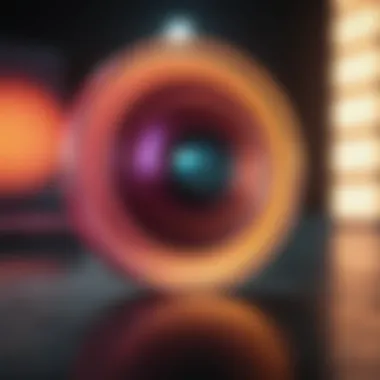

Imaging technologies benefit significantly from the use of IR dyes. These dyes enable high-resolution imaging in applications where visible light is insufficient. For instance, in medical imaging techniques like infrared spectroscopy, IR dyes enhance the contrast and detail of images. This is especially useful in detecting tumors or other abnormalities in soft tissues. IR dyes are not limited to medical applications; they also find use in industrial optical systems. Here they assist in thermography, which helps monitor heat emissions in machinery and buildings.
Moreover, the incorporation of IR dyes into imaging systems allows for better penetration through biological tissues. This characteristic leads to less damaging procedures as compared to traditional imaging methods. Additionally, recent advancements in technology have facilitated the development of cameras specifically designed to utilize IR dyes efficiently. This allows for dynamic imaging in various environments, thereby broadening their practical applications.
Biomedical Applications
In the biomedical field, IR dyes serve crucial roles. They are particularly important in diagnostic imaging and phototherapy. Infrared fluorescence imaging utilizes these dyes to visualize biological structures in vivo. This imaging technique allows researchers to track cellular processes in real-time, thus offering insights into cellular function and disease progression.
Besides diagnostics, some IR dyes are developed for therapeutic applications. Photothermal therapy, for instance, involves the use of specialized IR dyes that can convert absorbed light into heat. This generated heat can selectively destroy cancer cells while preserving surrounding healthy tissue. Thus, IR dyes are pivotal in enhancing treatment efficacy, thereby making cancer therapies more targeted and less invasive.
"The utilization of IR dyes can lead to more effective treatment protocols in modern medicine, paving the way for advancements in cancer therapies."
Environmental Monitoring
Environmental monitoring is yet another significant field utilizing IR dyes. These compounds are employed in sensors to detect pollutants in air and water. Their ability to absorb and emit infrared light makes them suitable for remote sensing applications. For example, IR dyes can help identify specific chemical signatures of contaminants, allowing for timely environmental assessments.
Additionally, remote sensing with IR dyes enables large-scale monitoring of ecosystems. Such capabilities are essential in studying climate change impacts and assessing forest health. Overall, the importance of IR dyes in environmental monitoring cannot be overstated, as they help in formulating regulations and strategies to mitigate pollution and protect fragile ecosystems.
Spectroscopic Techniques for IR Dyes
Spectroscopic techniques play a crucial role in the analysis of infrared dyes. These methods offer vital insights into the chemical and physical properties of these compounds. By understanding how IR dyes interact with light, researchers can refine their applications in various fields such as imaging, biomedical diagnostics, and environmental monitoring. Further, these techniques assist in the characterization of these complex molecules, enabling advancements in the development and use of IR dyes.
UV-Vis Spectroscopy
UV-Vis spectroscopy is one of the fundamental techniques for investigating IR dyes. Although traditionally used for ultra-violet and visible light, it provides valuable information about the electronic transitions in these molecules. When IR dyes absorb light, they undergo excitations that can influence their overall performance.
Key details include:
- Absorption Peaks: The presence of distinct peaks in the UV-Vis spectrum can indicate specific electronic transitions. This helps identify the functional groups present in the dye.
- Concentration Determination: By employing Beer-Lambert's Law, the concentration of IR dyes can be accurately measured based on absorbance.
- Quality Assessment: The sharpness and intensity of the peaks can indicate the purity and quality of the dye sample.
These factors sum up to why UV-Vis spectroscopy remains integral when working with IR dyes.
Fluorescence Spectroscopy
Fluorescence spectroscopy is another powerful technique for studying IR dyes. This method provides an understanding of the emission properties after the absorption of energy. The following points highlight its significance:
- Emission Characteristics: It helps researchers examine how dyes emit light and the wavelengths at which they do so.
- Sensitivity: Fluorescence techniques are highly sensitive, allowing the detection of very low concentrations of dyes in diverse matrices.
- Dynamics: This method can monitor dynamic processes, revealing information about kinetics of dye interactions in real time.
Using fluorescence spectroscopy can lead to a deeper comprehension of IR dyes in complex systems.
Raman Spectroscopy
Raman spectroscopy is a valuable tool for characterizing molecular vibrations within IR dyes. This technique allows researchers to see how molecules change under different conditions. Key aspects of Raman spectroscopy include:
- Fingerprinting: Each dye has a unique Raman spectrum, acting like a molecular fingerprint. This can greatly assist in identifying specific compounds.
- Non-Destructive: Raman spectroscopy does not require any special sample preparation, allowing for non-destructive analysis of dye samples.
- Environmental Analysis: It can be applied to study relationships between IR dyes and their surrounding environments, which is vital in applications like sensing and environmental monitoring.
"Raman spectroscopy offers a unique insight into the molecular structure and interactions of IR dyes, enhancing our understanding of their properties and applications."
Recent Advances in IR Dye Research
Research into infrared (IR) dyes has reached significant milestones, illuminating the path for both academic inquiry and practical applications. A growing focus on novel developments and sustainability highlights a transformative phase in the field of IR dyes. The advancements made have substantial implications for various sectors, emphasizing the importance of ongoing research and innovation.
Novel IR Dye Development
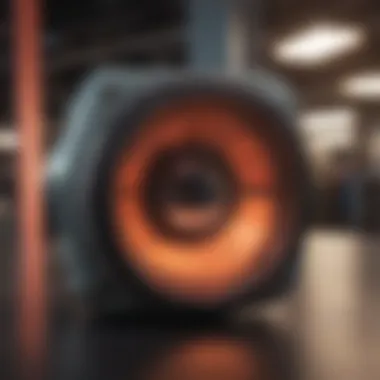
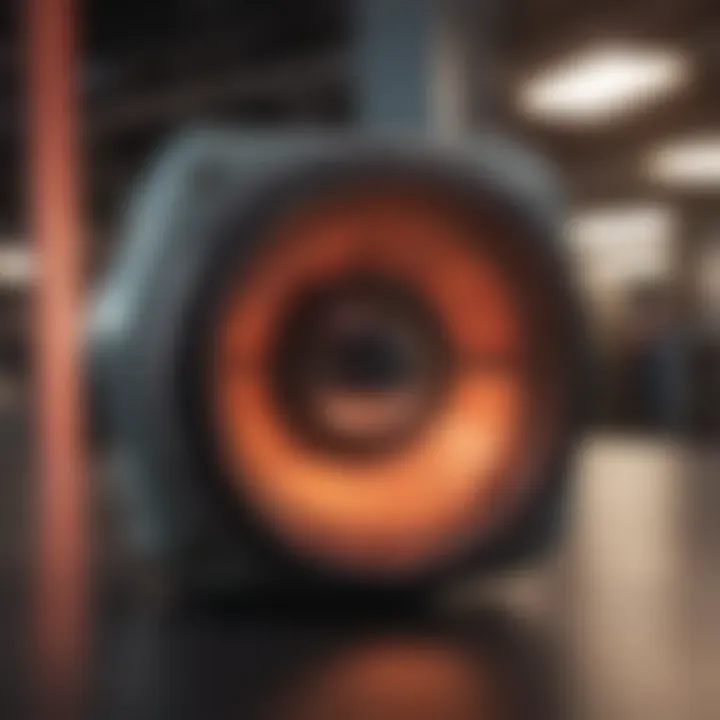
The creation of new IR dyes is driven by the demand for improved performance in terms of absorption and emission properties. Current research is concentrating on synthesizing dyes that exhibit more efficient light absorption and photostability, which is crucial for applications in imaging and sensing technologies.
Recent innovations have introduced several novel compounds, including those based on both organic and inorganic materials. These new dyes not only expand the spectrum of absorbance but also enhance the brightness and longevity of the emitted signals. Researchers are leveraging advanced synthesis techniques, such as molecular engineering, to tailor the properties of these dyes to meet specific demands.
For example, dyes with higher solubility and functionality are being explored for their potential use in biological imaging. These developments present promising avenues for further exploration within biomedical applications and beyond.
Additionally, interdisciplinary collaborations are proving beneficial. Chemists, physicists, and materials scientists are working together, often leading to breakthroughs that combine different areas of expertise. The integration of nanotechnology with IR dye development represents a frontier striving toward smarter and more efficient materials.
Sustainability and Green Chemistry
Sustainability continues to be a primary concern in dye research. The environmental impact of chemical production processes is becoming increasingly scrutinized, prompting a shift towards green chemistry principles. Researchers are now exploring sustainable synthesis routes that reduce harmful by-products and enhance resource efficiency.
Efforts to utilize renewable raw materials for dye development are gaining traction. Notably, some studies focus on developing dyes from natural sources, which could minimize ecological footprints while providing comparable efficacy to synthetic counterparts.
Moreover, green chemistry principles advocate for safer solvents and reaction conditions, ideal for both human health and environmental preservation. The adoption of such practices signifies a paradigm shift in how IR dyes are produced, aligning with global sustainable development goals.
"Advancements in IR dye research marry innovation with sustainability, creating products that meet both market demands and ecological responsibilities."
In summary, the recent advances in the field of IR dye research not only highlight the continuous progress in the novel development of dyes but also reflect a commitment to sustainability and responsible chemistry. These factors are essential for the future application of IR dyes across several domains.
Future Directions in IR Dye Research
The field of infrared (IR) dye research is rapidly evolving, influenced by advancements in technology and an increasing understanding of the dyes' potential applications. Future directions in this area will not only expand the capabilities of IR dyes but also provide critical insights into the underlying science, leading to enhanced performance in real-world applications. Emphasizing interdisciplinary approaches and innovative technologies, researchers can leverage insights from various fields to overcome current challenges and foster further development. Such directions are not only essential for academic inquiry but also for practical implementations in industries ranging from healthcare to environmental science.
Interdisciplinary Approaches
Interdisciplinary collaboration is vital for advancing IR dye research. Different fields, such as chemistry, physics, materials science, and engineering, can converge to foster innovation. For instance, insights from nanotechnology can lead to the creation of more efficient IR dyes with tailored properties for specific applications, such as biomedical imaging or environmental sensing.
Researchers should actively seek partnerships with professionals from various disciplines. This might include:
- Chemists: who understand molecular interactions and synthesis processes.
- Physicists: who can provide knowledge on light-matter interactions and fundamental principles.
- Biologists: who can elucidate how these dyes interact with biological systems, enhancing their biomedical applications.
- Engineers: who focus on integrating these technologies into practical devices and systems.
This collaborative approach can lead to more robust solutions, addressing limitations such as stability, toxicity, and photobleaching of IR dyes. By pooling expertise, researchers can tackle multifaceted challenges and develop new methodologies, ensuring continued advancement in this compelling field.
Technological Innovations
Technological advances play a significant role in shaping the future of IR dye research. Embracing innovations helps enhance the capabilities and scalability of IR dyes, leading to new applications and improved performance. Several areas stand out regarding potential technological breakthroughs:
- Nanotechnology: Utilization of nanoparticles can enhance the performance and functionality of IR dyes. For example, embedding dyes into nanocarriers can protect them from environmental degradation while improving their efficiency in various applications.
- Advanced Synthesis Techniques: Innovations like 3D printing and self-assembly may revolutionize the way dyes are synthesized. These techniques could allow for more precise control over structural properties and enable the development of complex IR dye systems tailored to specific uses.
- Machine Learning and AI: These technologies can accelerate the discovery process by predicting molecular behavior and suggesting optimal dye candidates for various applications. This includes the identification of new dye structures that may exhibit enhanced properties.
- Smart Materials: Combining IR dyes with smart materials can create responsive systems that adjust their behavior based on environmental changes, opening new doors in fields such as sensing and adaptive optics.
"The integration of novel technologies with interdisciplinary knowledge can exponentially increase the efficacy and range of applications of IR dyes."
Overall, the future of IR dye research will likely witness a convergence of creativity, knowledge, and technology. The challenges that arise will be formidable, but the rewards could be substantial, offering transformative solutions for multiple sectors.
Epilogue
In the realm of infrared dyes, the convergence of chemistry, material science, and innovation presents a fascinating landscape for research and application. This article has detailed multiple aspects, including the unique chemical properties, synthesis challenges, and various applications permeating different sectors. Understanding these elements is crucial for students, researchers, and professionals alike as they navigate this specialized field.
Summary of Key Points
To summarize, infrared dyes play an essential role in myriad applications ranging from biomedical imaging to environmental monitoring. Their chemical properties, such as molecular structure and absorption characteristics, underpin their functionality. Moreover, advancements in synthesis methods continue to push the boundaries of performance and sustainability in dye production. Key points include:
- The diverse applications of IR dyes in imaging and sensing technologies.
- The challenges faced in the synthesis of these dyes, requiring innovative solutions.
- The importance of interdisciplinary approaches in furthering IR dye research.
The Importance of Continued Research
The necessity for ongoing research in this area cannot be overstated. The continuous exploration of infrared dyes is imperative due to several compelling reasons:
- Technological Advancements: With rapid developments in imaging and sensing technologies, IR dyes must adapt to meet higher performance standards.
- Environmental Considerations: As industries become increasingly aware of their ecological footprints, research in sustainable synthesis methods and green chemistry becomes pivotal.
- Interdisciplinary Collaboration: Collaborating across fields can lead to innovative applications and enhancements in dye performance.
Ultimately, fostering a robust research environment will not only deepen our understanding of infrared dyes but will also enhance their practical applications, bringing forth solutions that influence various scientific domains.



